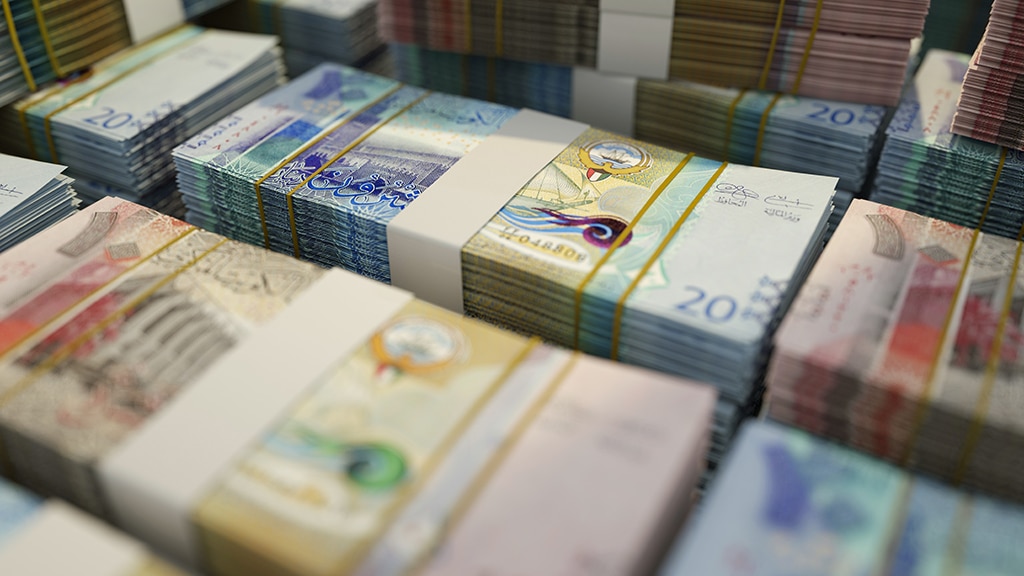By Ali Hamza
KUWAIT: In the middle of the 20th century, the Indian rupee served as the official currency in the eastern Arabian Peninsula, encompassing Kuwait, Bahrain, Qatar and Oman. The Indian rupee was pegged to the British pound at a rate of 13-1/3 Indian rupees. The Gulf rupee was introduced by the Indian government in 1959 as a response to the strain placed on Indian foreign exchange reserves by gold smugglers. These smugglers brought gold to the Indian subcontinent and exchanged it for Indian rupees, which were in circulation in the eastern Arabian Peninsula.
The smugglers then used these rupees to purchase more gold, ultimately depleting India’s foreign cash reserves and causing economic harm. Initially, the Gulf rupee was on par with the Indian rupee and was introduced to replace the Indian rupee exclusively outside India. However, on June 6, 1966, India devalued the Gulf rupee against the Indian rupee. Following this devaluation, several states that were still using the Gulf rupee adopted their own currencies. The Kuwaiti dinar was introduced in 1961 to replace the Gulf rupee, which was equal in value to the Indian rupee.
Initially, it was equivalent to 1 pound sterling. During the Iraqi invasion of Kuwait in 1990, the Iraqi dinar replaced the Kuwaiti dinar, with large amounts of banknotes stolen by invading forces and the drastic devaluation of the Kuwaiti dinar, which severely affected the country’s economy during the war. After liberation, the Kuwaiti dinar was reinstated, and the country slowly began to recover. A new series of banknotes was introduced to replace the previous notes, including the ones that were stolen.
As of 2023, there have been six series of the Kuwaiti dinar printed. On March 18, 1975, the Kuwaiti dinar was pegged to a weighted currency basket. However, from Jan 5, 2003 to May 20, 2007, the pegging was switched to 1 KWD = 3.53 USD. From June 16, 2007, it was re-pegged to a basket of currencies and was worth about $3.28. The Kuwaiti dinar is the world’s most valuable currency unit. During the global financial crisis that began in 2008, Kuwait took several measures to protect its economy and currency value. These included injecting capital into banks, guaranteeing deposits and implementing measures to mitigate the impact of the crisis.
Kuwait’s high foreign reserves and stable oil prices at the time also helped shield its economy and currency from the worst effects of the crisis. Why is the Kuwaiti dinar so valuable? Before the discovery of oil, Kuwait’s economy relied on traditional activities such as fishing, pearling and trading. The discovery of oil in 1938 transformed the economy, leading to rapid development. The abundant oil resources have played a significant role in strengthening the economy and the value of the Kuwaiti dinar. “Several key factors contribute to its high value.
Kuwait has a strong and stable economy, primarily due to its vast oil reserves and efficient resource management. The government of Kuwait has implemented wise financial policies. Additionally, the fixed exchange rate of the Kuwaiti dinar, pegged to a basket of international currencies, helps maintain its value despite fluctuations in the global market. The Central Bank of Kuwait (CBK) regulates currency supply to align with the country’s economic needs, further supporting its value,” said a senior employee at a local bank.
The value of the Kuwaiti dinar also depends on oil prices, as Kuwait is a major oil exporter. Changes in global oil prices directly impact the Kuwaiti dinar and can lead to fluctuations in its value. Government measures and regulations by the Central Bank also play a crucial role in maintaining the currency’s value. As of 2023, the Kuwaiti dinar remains the world’s most valuable currency, with an exchange rate of 1 KWD = 3.25 USD.









